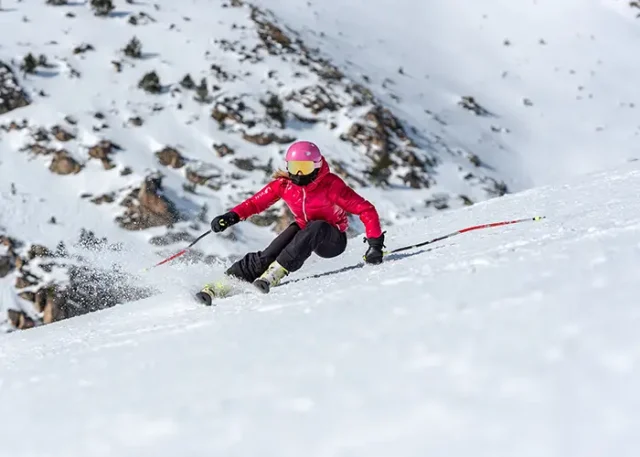
While working out through the summer might feel like a walk in the park, exercising in the cold throws a few more challenges.
Snow sports are tough. As temperatures get lower, the metabolism increases to warm up our muscles. And as our heart and lungs work harder to fight the colder air, it can cause a lot of stress on the body.
However, the good news is that it only takes a little bit of training to start feeling comfortable while you’re skiing or snowboarding. Here’s how to get started with pragmatic, effective training for the winter months.
Build a strong fitness foundation
Don’t underestimate the importance of general strength and endurance.
As we approach the coldest part of the year, it’s worth taking some time to hit the gym for some progressive strength conditioning. That means increasing the weight week by week, never pushing yourself too hard in one session.
If you’re training only for one sport, it’s likely that you’ll already know which muscle groups to train together. But remember that adjusting your workouts seasonally could bolster your performance and help to prevent injuries.
Furthermore, as the cooler temperatures make our muscles work harder too, it’s worth building a base level of balance training and flexibility. Combined, these elements maker the foundations for all your winter training.
Sport-specific skill and technique development
For athletes who participate in demanding snow sports, technical training is key. But in the UK, most people don’t have access to specific facilities for winter sports. You may benefit from targeted initiatives to work on your skills.
For younger people, there’s the Futures Project from Snowsport England. This supports people aged between 6-21, encouraging them to join winter sports and develop skills for snowboarding and skiing. For adults serious about mastering their sport, programmes like UNIQ’s Alpine Winter might be better suited.
No matter your sport, being consistent and following sport-specific drills will help you immensely in developing as an athlete.
Nutrition, recovery and equipment
Every athlete should understand the critical role of nutrition for energy and recovery. Eating enough food is the baseline, so you should try to gain an understanding of how many calories your body needs – everyone is different!
What’s more, paying attention to the type of foods you eat will be an important part of your strategy. Stay hydrated and aim for a complete, balanced diet.
Recovery practices like stretching and rest will help your body to recover, but you can take preventative measures by choosing the right gear too. Specialist winter kit like boots, skis and thermal socks keep you warm and comfortable. This naturally boosts your performance, no matter what you’re doing!
Mental preparation and setting goals
Finally, being emotionally ready is just as important as getting physically fit.
Achieving your goals is only possible if you’ve got the right attitude and you’re willing to put the work in. That involves getting help from professional coaches and providers wherever necessary, along with being able to learn from your mistakes.
As the season progresses, get familiar with your most effective focus techniques and learn how to manage performance anxiety. With all these things mastered, you’ll be unstoppable!





